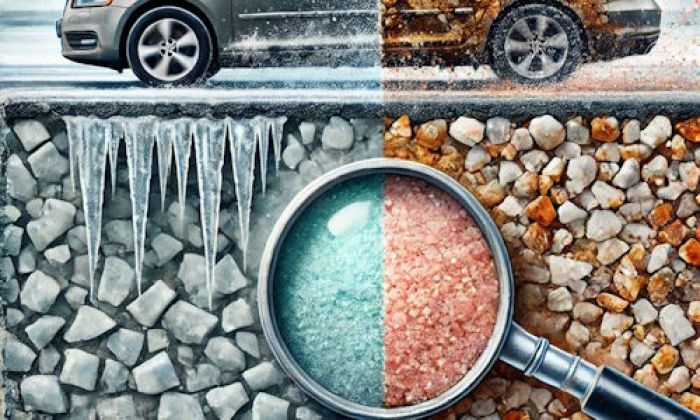For many experienced drivers, it is not that uncommon to drive around with the Check Engine Light illuminating on the dashboard of their vehicles. Especially with the diagnostic trouble code P0420, since it usually doesn't have any direct effect on the driving conditions or cause any immediate reliability issues. However, ignoring trouble codes is not only bad for your vehicles in the long run, but it will also cause you to fail an emissions test.
P0420 code highlights
- Level of urgency:Medium
- Possible culprits:catalytic converter, exhaust pipe
- Price for repair:$500 - $1,500
- If neglected:Engine stalling, power loss, failing emission tests
- DIY repairs:Impossible
- Can you drive?Yes

What Does the Diagnostic Trouble Code P0420 Mean?
When the efficiency of the catalyst system is below the threshold (Bank 1), the check engine light will come on with the trouble code P0420. The P0420 Diagnostic Trouble Code is a clear indication that your vehicle's catalytic converter is not efficiently functioning.
The Catalytic Converter is part of the exhaust that breaks down harmful pollutants like carbon monoxide produced by the running engine into less harmful gasses.
So when the catalytic converter is underperforming, the oxygen levels fall below the required threshold. As a result, your vehicle ends up putting excessive amounts of harmful pollutants into the air. When this issue with your vehicle's exhaust or fuel system is detected by the Powertrain Control Module (PCM), the check engine light will appear with the diagnostic trouble code P0420.
Driving with the diagnostic trouble code P0420 is not likely to cause any serious safety or drivability issues. However, if the catalyst system is underperforming on bank 1, the engine of your vehicle will produce and/or discharge more harmful and dangerous pollutants than legally allowed.
This will not only make the engine check light illuminate on your dashboard alerting you of this existing issue but also most likely cause you to fail your emissions inspection/test.
Causes/Symptoms of Diagnostic Trouble Code P0420
Although there are other potential causes for this Diagnostic Trouble Code, the catalytic converter failure is the most common reason for the P0420 trouble code. Sometimes you can get other trouble codes along with P0420 that could clarify the reasons behind the failed catalytic converter. It is common for catalytic converters to malfunction due to misfires or an inaccurate air-fuel ratio.
The activation of the check engine light in your vehicle is the first and one of the most common signs of a P0420 trouble code. Also, you will notice some performance issues with your vehicle since the engine power output will decrease.
Once the catalytic converter is used excessively, you may have difficulties exceeding over 30 to 40 mph due to a lack of power in the engine and experience decreased fuel efficiency.
Also, it is common to notice a rotten egg odor coming out of the exhaust from having small amounts of hydrogen sulfide in the fuel. Normally, a catalytic converter will turn the hydrogen sulfide into odorless sulfur dioxide. However, if the converter malfunctions, the exhaust ends up releasing hydrogen sulfide which gives off that rotten egg smell.
How Does Code P0420 Affect Emissions Test?
The diagnostic trouble code P0420 implies that a problem has been detected with the catalytic converter by your vehicle's Powertrain Control Module (PCM). The catalytic converter of your vehicle plays a crucial role in reducing emissions of harmful pollutants like carbon monoxide, nitrogen oxides, and hydrocarbons.
As dangerous pollutants are produced during the combustion cycle, the catalytic converter lowers the emissions released from the exhaust pipe by breaking down those toxic pollutants.
However, a P0420 code means that the catalytic converter is not able to remove the pollutants efficiently from the exhaust. So if the catalytic converter is malfunctioning, it will fail to convert the unburned fuel and carbon monoxide (CO) into carbon dioxide (CO2) and water (H2O) as well as fail to turn nitrogen oxides (NOx) to nitrogen. Therefore, although this code does not pose any immediate threats or hazardous conditions for the driver, your vehicle will fail the emissions test.
Also, the catalytic converter is linked to two oxygen sensors (O2 sensors), one upstream and the other downstream. Their purpose is to assist your vehicle to calculate how to balance the air-to-fuel ratio. You can be sure that the oxygen levels are too high if you notice any drops in the voltage of the downstream oxygen sensor or if it fluctuates similarly to the upstream oxygen sensor's voltage.
Whether due to the catalytic converter failing to reduce pollutants or the O2 sensors malfunctioning, the PCM receiving any unexpected readings will trigger a P0420 trouble code.
Since it is possible for the O2 sensors to be the culprit for the P0420 trouble code and not the catalytic converter, you must diagnose the P0420 code correctly before beginning any repairs. If the readings of the upstream and downstream oxygen sensors are normal, most mechanics will next check for engine misfires, faults with the ignitions, or even issues in the fuel systems.
How To Pass Emission Test with P0420?
If the check engine light continues to appear on your dashboard with a P0420 code, your vehicle will most likely fail an emissions test. Sure, you may have heard about people resetting the ECU or clearing the codes to make the check engine light turn off before going for their emissions test. However, the OBD-II test is a system designed to stop people from getting away with those tricks and shortcuts to pass the emissions test.
The ECU has to register different readiness monitors which is done in the same order by driving around and covering enough mileage to complete a drive cycle. The ECU must go through the test cycle and reach the "Ready Point" without the check engine light appearing for you to even take the emissions test. If your vehicle has more than 1 incomplete readiness monitor, your vehicle will not pass the emissions test and you will have to come back after driving around long enough to complete the normal drive cycle.
As a result, if you use those old tricks and wipe out the codes or clear the memory and try to get the test done before the check engine light can come back on, it will not work. If your vehicle does not have enough mileage for all of the readiness monitors to be complete, it will show up when they run the tests. You will be told to drive your vehicle more to reach the "Ready Point" so that they can scan for any trouble codes stored in the memory of the "Ready" monitors.
So every time you clear the memory and get rid of the previously stored codes, you end up resetting the monitors into a "Not Ready/Not Ran" state. Since the issues are not fixed and only cleared temporarily, the PCM will detect those issues once again when you run your vehicle long enough to get the monitors into a "Ready" state.
Therefore, if you truly want to pass an emissions test, repair the actual problems, reset the memory, and drive your vehicle for at least 100 miles so that all of the readiness monitors can run and be ready to be scanned during the emissions test.
Replacing a catalytic converter can be very expensive, but getting a new converter may not always be necessary. Your vehicle may be showing the diagnostic trouble code P0420 due to a faulty O2 sensor and the catalytic converter may be working just fine. Also, exhaust leaks can be a reason for the P0420 trouble code where welding the leaks is a much more simple and more inexpensive solution.
Conclusion
Just like with most other things in life, shortcuts will only get you so far and usually in a worse situation than you began with. If you have to pass an emissions test but your vehicle is showing a P0420 trouble code, there is really no way of getting around it. Almost every mechanic will advise you to get to the bottom of the problem and get it fixed before showing up for the emissions test.
If your check engine light is illuminating with a P0420 trouble code, you will not pass an emissions test. Simply whipping out or clearing old codes will not work as the monitors must be "Ran and Ready" and if you reset the memory, you will be told to come back after putting more mileage on your vehicle.
Furthermore, even though a faulty catalytic converter is not harmful to the driver, it can eventually overheat and end up destroying other engine components of your vehicle.
About the authors
The CarAraC research team is composed of seasoned auto mechanics and automotive industry professionals, including individuals with advanced degrees and certifications in their field. Our team members boast prestigious credentials, reflecting their extensive knowledge and skills. These qualifications include: IMI: Institute of the Motor Industry, ASE-Certified Master Automobile Technicians; Coventry University, Graduate of MA in Automotive Journalism; Politecnico di Torino, Italy, MS Automotive Engineering; Ss. Cyril and Methodius University in Skopje, Mechanical University in Skopje; TOC Automotive College; DHA Suffa University, Department of Mechanical Engineering






Add comment